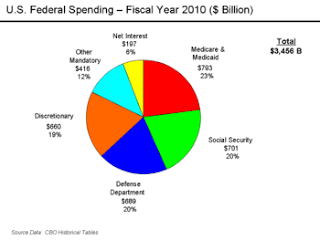In psychology the term “anchoring” refers to the human tendency to rely too heavily on a single piece of information to make a decision. We anchor our choices around this datum. The process itself makes some sense. If asked to answer the question: how many leaves are on an average mature sugar maple tree on June 24th, most of us would have no clue where to start, so we invent our own anchor.
We might think of the pile of leaves we had to rake from beneath a maple tree and use its remembered volume as a start—an anchor from which we then will try to guess how many leaves made up ten cubic meters of leaves. Or we might start with the height of a tree, decide branches Y every two feet, each twig holds twenty leaves and make our guess.
 The point is we start with something—and it turns out that when faced with estimating something we have no clue about we will anchor off random numbers. For example, assume you split all the people you know into two random groups. Ask Group 1 whether the tree has more or less than 50,000 leaves. Ask Group 2 whether the tree has more or less than 500,000 leaves. People will make their guesses and don’t tell them if they are right or wrong.
The point is we start with something—and it turns out that when faced with estimating something we have no clue about we will anchor off random numbers. For example, assume you split all the people you know into two random groups. Ask Group 1 whether the tree has more or less than 50,000 leaves. Ask Group 2 whether the tree has more or less than 500,000 leaves. People will make their guesses and don’t tell them if they are right or wrong.Then ask each person to give you their best guess what the actual number of leaves is. Those in Group 1 will guess a much lower number than those in Group 2. Your first question anchored their response. The final guesses were influenced by the number in your first question.
What does anchoring have to do with personal finance? PLENTY!
Which would you rather buy, something marked 50% off or 30% off or something you need to pay a premium to acquire? We all like a bargain, but here are the actual circumstances:
Store 1: List price is $100, marked 50% off. Final price $50.
Store 2: List price is $70, marked 30% off. Final price $49.
Silent Auction: Donated value $35 (wholesale). Winning bid $45.
When I put it that way, we would all rather buy the item at the silent auction, pay less and at the same time benefit some charity or church. Yet we consistently ignore the bottom line and rely on false anchors to influence our decisions or, more insidiously, how we feel about our decisions.
Let’s say at the beginning of an imaginary year half of us invest $100,000 in Stock A and the other half in Stock B. The Bernie Madoff endorsement from the broker guarantees we will make money. There is a caveat: we can’t sell the stock until the end of the year.
The half who buy Stock A for $100,000 watch as each month it increases $1,000 so at the end of the year the position is worth $112,000. Pretty good investment, right? It earned 12% during the year. They cash out and have $112,000 in the bank.
At the same time the other half buys Stock B for $100,000. In the first four months it increases $25,000 per month. At the end of four months it doubled to $200,000. In the next eight months it loses $11,000 per month. At the end of the year this position is worth $112,000. Pretty good investment, right? It earned 12% during the year. They cash out and have $112,000 in the bank.
How would you feel with each of these investments? You should feel the same, but you probably won’t. Stock A went up and up and up and up. It provided good news twelve months in a row. It is a Snoopy Dance stock.
Stock B doubled in four months and then, while there was nothing to do but watch, month after month after month it gave away your money, until you only had $112,000 at the end of the year. If you are like most of us, you will anchor on the $200,000 you could have had if you sold Stock B at the end of April. You feel miserable as you watch your money shrink.
Oh, but that doesn’t make sense, the rational reader will say. Who said anything about feelings and decision-making being rational?
I know all about anchoring, yet I fall into the trap all the time. I can tell you, for example, that my net worth reached its zenith in October 2007. Three and a half years later it has climbed back to within $10,000 of the all-time high. (Of course that was before this month’s market declines, but I only do my balance sheet at the end of the month.) When I think this way, I feel a bit diminished.
But wait! During those three and a half years I’ve been retired. I’ve removed three and a half years of living expenses from my assets. I’m actually ahead of the game—as long as I set the right anchor to view my finances. In fact, if I compare my current net assets now to those when I retired, I’m up 50%. At the time I retired I figured I had enough to live on, and now I’m way ahead of that with nine fewer years to live. (CPI has only increased 26% in the 9+ years of my retirement.) I should be, and am, delighted with my finances because I choose to compare my actual situation to my original plan and ignore the intervening highs (and lows.)
An acquaintance recently listed his second home for sale at a price that was appropriate when he bought the house at the market peak, but is no longer close to what buyers will pay. His rationale is that he’s in no hurry, but wants to get his investment back. I’ve seen people do this with stocks they hold as well. I’ll sell, they say, when I can make a profit.
The real question in both cases is not what you paid for something, but what its current market value is, and given its current value, whether or not you can apply the proceeds to a better investment? What you paid for something is only interesting when you are looking at the tax ramifications of a sale (which is important to do, but is the tail, not the dog.) If the current stock holding has the best potential, you should hold whether or not it shows a loss or big gain relative to book value. Conversely, if something has better prospects, take your loss and move forward.
We need not beat ourselves up because we are innately irrational. What we need to do is recognize when we are inappropriately anchoring. To do that requires us to remember our goals and objectives and reflect reality.
~ Jim



